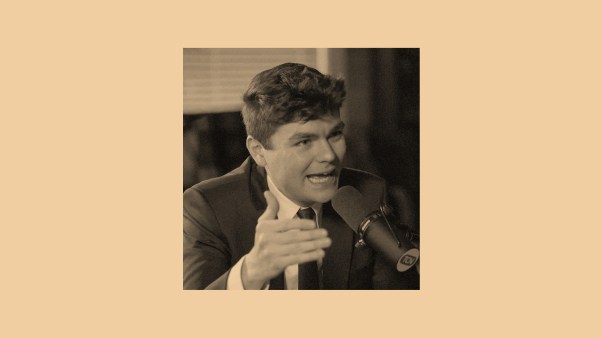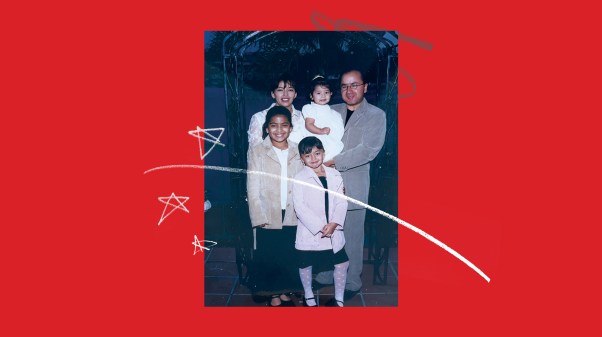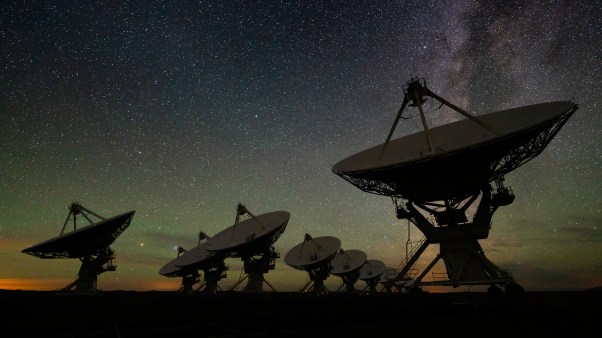In this series


In social science, it’s relatively easy to explain what is happening. Ask a question with a straightforward answer—How has the cost of lettuce changed over time? Are people getting married later in life?—and the answer should be forthcoming. Just download the right data set, write a bit of computer code, and present the findings in an informative, visually appealing manner.
Why Religion Went Obsolete: The Demise of Traditional Faith in America
Oxford University Press, USA
440 pages
$34.99
But once you describe the what, it’s natural to begin wondering about the why.
As I like to tell my graduate students, there’s nothing simple about the social world. The internet is full of clickbait articles promising three simple tricks to increase your income or one easy hack for a better night’s sleep. There are no such shortcuts, however, in academic social science.
Take American religion for instance. Over the past several decades, the most important trend is a pretty simple line graph indicating the share of adults who claim no religious affiliation. Five decades ago, that figure was 5 percent of the population. Today, it’s about 6 times higher. But why? How did the share of “nones” rise so dramatically in such a short time?
Smith tackles those questions, among others, in Why Religion Went Obsolete. The book analyzes responses gleaned from four focus groups, over 200 interviews, and a survey sent to more than 2,000 adults. Smith’s conclusion is clear and simple: For a growing number of younger Americans, religion simply lost its usefulness.
Those accustomed to ruminating about the decline of religion have long sensed that today’s young people don’t seem to care much about faith one way or another. However, that feeling has never been developed into a mature, testable theory. Smith harnesses a term—zeitgeist, often defined as “the spirit of the times”—that helps ground this pervasive sense that some big shift has occurred. It’s an idea many of us innately understand, even if we have a hard time wrapping our minds around it. Smith does a great service by laying an academically rigorous foundation for what he calls the “Millennial zeitgeist.”
Getting down to specifics, Smith argues that the millennial generation has embraced a new zeitgeist based around four key characteristics: cultural individualism, rapid technological change, “postmaterialist” values of autonomy and self-expression, and a deep skepticism of authority. As an older millennial, I can say that those four factors resonate with my own experience. Even so, I’m not entirely convinced, on an empirical basis, that millennial life rests atop a philosophical scaffolding fundamentally unlike that of prior generations of Americans.
Take, for instance, one statement Smith posed to survey respondents: “I am more concerned with a good life here and now than what comes after death.” If millennials came of age amid an entirely different zeitgeist, we would expect their answers to differ dramatically from, say, those of baby boomers. In fact, the breakdown is strikingly similar (51% of people born between 1946 and 1954 either “strongly agree” or “somewhat agree” with the statement, compared to 54% of millennials). Thus, people born three or four decades apart have nearly the same view about the value of living a good life.
Smith also reports survey results that might seem to suggest significant generational differences, when in reality the explanations are probably more mundane. His questionnaire included the statement “I spend a great deal of time thinking about myself.” Fifty-three percent of millennials agreed with this compared to just 33 percent of early boomers. Does this indicate a huge zeitgeist shift? Or simply confirm that people self-reflect less as they age? Without having surveyed baby boomers on these questions when they were younger, we can’t know for sure.
Social science models always contain lots of unexplained variance, no matter how sophisticated our conceptual starting points and statistical techniques. In graduate school, I remember one of my professors joking about the best way to wave away these mysteries: Just shrug your shoulders, say culture, and move on with life.
We understand readily enough that culture shifts all the time, following new fashion styles and intellectual trends, even if we find these shifts impossible to fully explain. In attempting to get a handle on an obvious cultural shift in how young Americans view religion, Smith’s book wields social science tools with incredible skill. It’s a methodological tour de force. However, I can’t help wondering whether a full accounting still lies outside his grasp.
It bears mentioning, for instance, that the ranks of nones appear to have stopped increasing. A number of independent surveys demonstrate that the share of Americans claiming no religious affiliation froze back in 2020. According to data I reviewed from the Cooperative Election Study, religion may actually be on the upswing among millennials and Generation Z.
Even so, I generally agree with Smith’s conclusions. Religion in the United States is declining for many reasons, including self-inflicted wounds from corrupt or abusive ministry leaders. (In one chapter, Smith devotes four and a half pages to a single table listing scandals among major conservative Protestant leaders.)
But churches are also emptying for reasons that can’t be blamed on ministry misbehavior. American culture was already heading in a direction that ensured headwinds for houses of worship. To take one example, Smith notes how the digital revolution ate away at communal gatherings by turbo-charging trends in atomization that began in the 1980s. More than ever, people could entertain themselves without leaving the comfort of home. While churches have occasionally responded with flashy worship bands, polished event production, and easily digestible sermons, this hasn’t always coaxed people away from scrolling news feeds on their couches.
In total, Smith’s book makes a laudable contribution to current discourse about the decline of religion. His concerted effort to describe, define, and measure the shifting cultural zeitgeist should motivate students of American religion to think outside the box when theorizing about the American religious landscape. However, I think all of us who share in this work would do well to remember Paul’s words in in 1 Corinthians 13:9–10: “For we know in part and we prophesy in part, but when completeness comes, what is in part disappears.”
Ryan P. Burge is associate professor of political science at Eastern Illinois University. He is the author of 20 Myths about Religion and Politics in America.


















